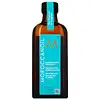What's inside
What's inside
 Key Ingredients
Key Ingredients

No key ingredients
 Benefits
Benefits

 Concerns
Concerns

 Ingredients Side-by-side
Ingredients Side-by-side

Carthamus Tinctorius Seed Oil
MaskingCaprylic/Capric Triglyceride
MaskingRicinus Communis Seed Oil
MaskingCocos Nucifera Oil
MaskingCoconut Alkanes
EmollientPassiflora Edulis Seed Oil
EmollientOryza Sativa Bran Oil
EmollientOrbignya Oleifera Seed Oil
EmollientSimmondsia Chinensis Seed Oil
EmollientCoco-Caprylate/Caprate
EmollientTamarindus Indica Fruit Extract
Skin ConditioningAcacia Concinna Fruit Extract
Skin ConditioningEuterpe Oleracea Fruit Oil
Skin ConditioningOenocarpus Bataua Fruit Oil
EmollientSesamum Indicum Seed Oil
EmollientMauritia Flexuosa Fruit Oil
Skin ConditioningOryza Sativa Bran Extract
Skin ConditioningHelianthus Annuus Extract
EmollientPhyllanthus Emblica Extract
Skin ConditioningBacopa Monnieri Leaf Extract
Skin ConditioningEclipta Prostrata Extract
Skin ConditioningWithania Somnifera Root Extract
Skin ConditioningRosmarinus Officinalis Leaf Extract
AntimicrobialParfum
MaskingPhenoxyethanol
PreservativeTocopherol
AntioxidantCarthamus Tinctorius Seed Oil, Caprylic/Capric Triglyceride, Ricinus Communis Seed Oil, Cocos Nucifera Oil, Coconut Alkanes, Passiflora Edulis Seed Oil, Oryza Sativa Bran Oil, Orbignya Oleifera Seed Oil, Simmondsia Chinensis Seed Oil, Coco-Caprylate/Caprate, Tamarindus Indica Fruit Extract, Acacia Concinna Fruit Extract, Euterpe Oleracea Fruit Oil, Oenocarpus Bataua Fruit Oil, Sesamum Indicum Seed Oil, Mauritia Flexuosa Fruit Oil, Oryza Sativa Bran Extract, Helianthus Annuus Extract, Phyllanthus Emblica Extract, Bacopa Monnieri Leaf Extract, Eclipta Prostrata Extract, Withania Somnifera Root Extract, Rosmarinus Officinalis Leaf Extract, Parfum, Phenoxyethanol, Tocopherol
 Reviews
Reviews

Ingredients Explained
These ingredients are found in both products.
Ingredients higher up in an ingredient list are typically present in a larger amount.
Parfum is a catch-all term for an ingredient or more that is used to give a scent to products.
Also called "fragrance", this ingredient can be a blend of hundreds of chemicals or plant oils. This means every product with "fragrance" or "parfum" in the ingredients list is a different mixture.
For instance, Habanolide is a proprietary trade name for a specific aroma chemical. When used as a fragrance ingredient in cosmetics, most aroma chemicals fall under the broad labeling category of “FRAGRANCE” or “PARFUM” according to EU and US regulations.
The term 'parfum' or 'fragrance' is not regulated in many countries. In many cases, it is up to the brand to define this term.
For instance, many brands choose to label themselves as "fragrance-free" because they are not using synthetic fragrances. However, their products may still contain ingredients such as essential oils that are considered a fragrance by INCI standards.
One example is Calendula flower extract. Calendula is an essential oil that still imparts a scent or 'fragrance'.
Depending on the blend, the ingredients in the mixture can cause allergies and sensitivities on the skin. Some ingredients that are known EU allergens include linalool and citronellol.
Parfum can also be used to mask or cover an unpleasant scent.
The bottom line is: not all fragrances/parfum/ingredients are created equally. If you are worried about fragrances, we recommend taking a closer look at an ingredient. And of course, we always recommend speaking with a professional.
Learn more about Parfum